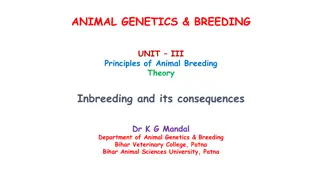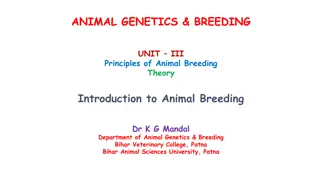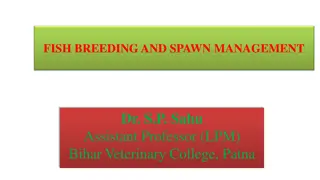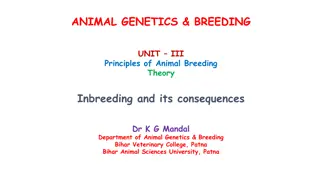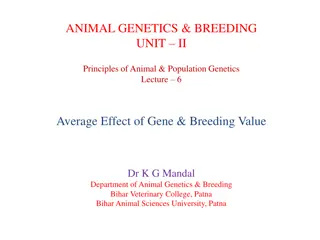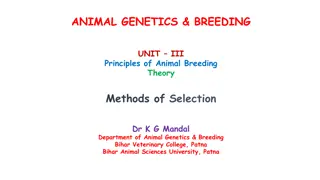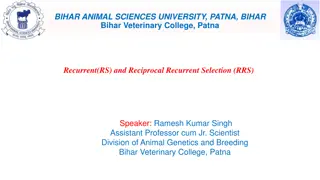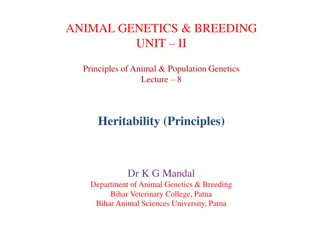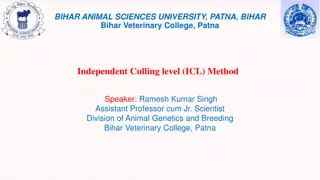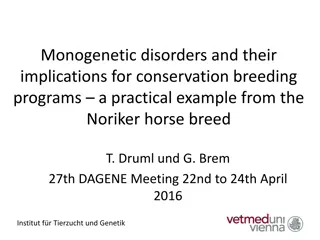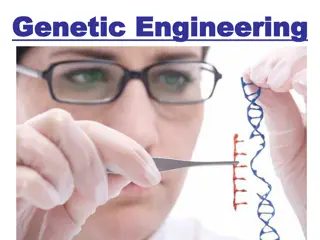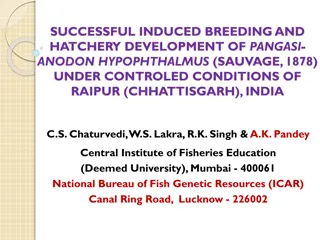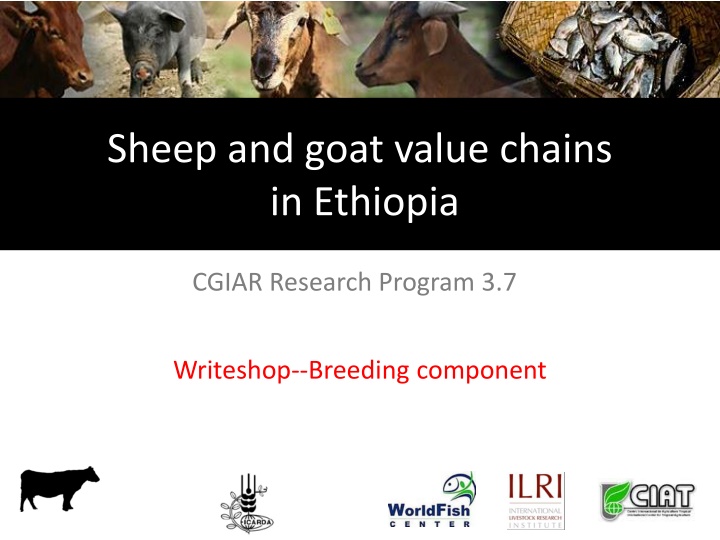
Optimizing Sheep and Goat Breeding Practices for Sustainable Value Chains in Ethiopia
Explore the breeding component of sheep and goat value chains in Ethiopia through understanding the production system and resource base, current breeding practices, strategies for improvement, and necessary support services to enhance efficiency and sustainability of the sector.
Download Presentation

Please find below an Image/Link to download the presentation.
The content on the website is provided AS IS for your information and personal use only. It may not be sold, licensed, or shared on other websites without obtaining consent from the author. If you encounter any issues during the download, it is possible that the publisher has removed the file from their server.
You are allowed to download the files provided on this website for personal or commercial use, subject to the condition that they are used lawfully. All files are the property of their respective owners.
The content on the website is provided AS IS for your information and personal use only. It may not be sold, licensed, or shared on other websites without obtaining consent from the author.
E N D
Presentation Transcript
Sheep and goat value chains in Ethiopia Planning Meeting September 2011 CGIAR Research Program 3.7 Writeshop--Breeding component
The focus (Expectation) Identify best-bet interventions Is breeding a constraint 1. Understanding the production system and resource base 2. The breeding and management practices being followed 3. What strategies could be designed, implemented and sustained? 4. What support services are available and perhaps needed?
Understanding the production system and resource base Crop-livestock systems vs Pastoral & semi-pastoral systems What breeds of small ruminants are kept in the area? What are the important characteristics (special qualities) of each of the breeds? Proportion of farmers/pastoralists owning each of the breeds of sheep/goat? Flock size What are the constraints as related to breeding
The breeding and management practices being followed Definition of breeding objectives Purpose of keeping the breed Selection criteria Mating practices Breeding practices being followed (duration of ram/buck use, intensity of selection ).. including structures Traditional knowledge in animal management (ram use, avoiding inbreeding .)
What strategies could be designed, implemented and sustained? Breeding program Animal identification Data recording and management Ram/buck selection, sharing and management practices Institutional set-up Social networks
What support services are available and perhaps needed? Genetic improvement per se will not work Inputs (breeding stock, drugs, forage seeds ..) Services (vet, feed ..)
The checklist What breeds of small ruminants are kept in the area? What are the important characteristics (special qualities) of each of the breeds kept? Proportion of farmers/pastoralists owning each of the breeds of sheep/goat? Is this different between men and women farmers? For what purpose are you keeping the different breeds? Is this different between men and women farmers? What are the constraints of each of these breeds?
Do farmers in the area select rams/bucks for breeding purposes? What about female animals? If yes, at what age do you select males and females? Why? For how long do farmers in the area use one selected ram? Who decides the length of time one breeding ram should serve in one community? Do you control mating? If yes, what is the reason? Do farmers have knowledge of inbreeding? What mechanisms are used to avoid inbreeding and multiplication of unwanted characters in the area?
Do farmers in the area perceive that lack of breeding rams has a negative impact on the genetic performance of their animals? How do people in the area perceive the performance of local breeds of small ruminants in the area? What about that of improved breeds? What are the major breeding related problems constraining the development of small ruminant s production in the area? What are the possible solutions for these problems? What does the breeding practices look like during mobility in pastoral areas Do you keep any form of written records on the performance / productivity of your flock, if so, which type of records do you keep? Is this different between men and women farmers? What are your traditional methods for managing the sheep/goat breed(s)?
Abergelle- Amhara Goat production practices----nothing is said about it. Input supply----breeding stock some mention of the selection criterion
Abergelle- Tigray Characteristics Reasons for keeping small ruminants Management practices It is combined
Atsbi Breed description Selection practices Lack of knowledge on inbreeding and breeding management Breeding constraints????
Doyogena Purpose of keeping sheep Available breed.. No improved breed, introduction of Bonga Description of Adilo Selection criteria Lack of improved rams No knowledge of inbreeding No recording




